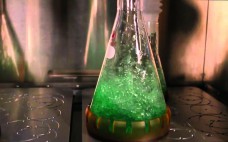During process development (PD), single-use (SU) bioreactors can streamline cell-culture workflows and reduce risks for contamination and operator errors. But transferring cultures from laboratory- to benchtop- and pilot-scale vessels requires consideration of fundamental bioreactor principles. In October 2021, Ann D’Ambruoso (manager of product applications and marketing) and Cristina Bernal Martinez (applications support engineer, both at Getinge) reviewed factors for scale-up success and presented a case study involving transfer of cell cultures to Applikon AppliFlex SU stirred-tank (ST) reactors. The Presentations…
Author Archives: Ann D'Ambruoso
Orbital Shaking and Acoustic-Resonance Mixing: Comparing Culture Characteristics
Production of recombinant proteins usually happens in suspension cultures, with oxygen limitation playing a major role. Oxygen and nutrition feeds are of great significance to aerobic suspension cultures. Oxygen is often the controlling factor in orbital shaken systems because oxygen transfer occurs only through diffusion, which is limited by gas-exchange surface and mixing characteristics. Here, we compare growth characteristics of microbial cultures in a standard shaken incubator with those of cultures in a RAMbio fermentation system, paying particular attention to…
Improving Product Quality By Lowering Glucose Concentration
Cell culture is widely used for stable expression of monoclonal antibodies with posttranslational modifications. Despite having a stable cell line, a protein product is still in danger of improper modifications from chemical interactions with media. For example, the primary amino groups on a protein are susceptible to reactions with reducing sugar molecules. In the case of a reaction with glucose, this is called glycation. The relationship between glucose concentration and glycation is explored here. Methods: Chinese hamster ovary (CHO) cells…


